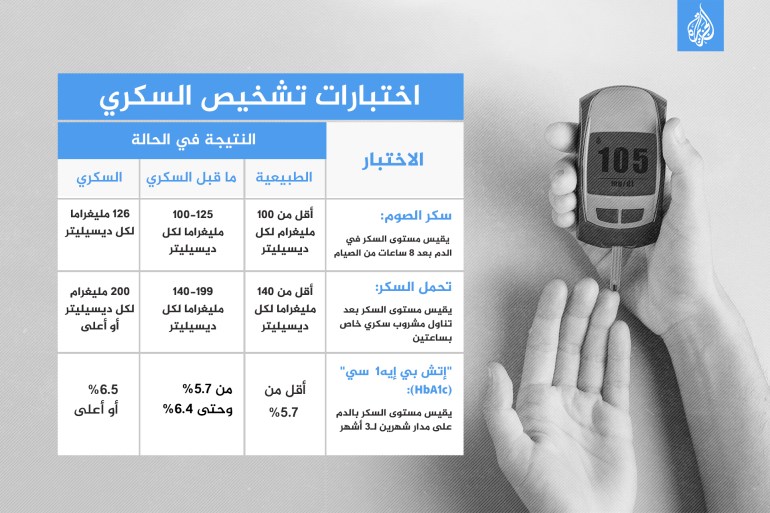Diabetes mellitus is described as a dangerous disease if it is not controlled, and therefore it must be recognized early, and there are early symptoms that may indicate diabetes or other health problems, and to make sure when some or all of them appear, you must see a doctor immediately for the necessary tests.
These are the early symptoms of diabetes:
frequent urination
Feeling very thirsty
Feeling very hungry even though the person is eating as usual.
Extreme fatigue
Blurry vision
Delayed wound healing
Bruising delayed healing
Weight loss even though a person eats more, and this symptom indicates type 1 diabetes.
Feeling of tingling, pain, or numbness in the hands and feet.
Could the symptoms appear suddenly?
In people with type 1 diabetes the onset of symptoms can be very sudden, while in type 2 diabetes symptoms tend to appear gradually, and sometimes there are no signs at all, according to the American Diabetes Association. .
Diabetes is a metabolic disease (metabolic disorder) caused by insulin deficiency or a weak normal response from the body's cells to this hormone, which introduces the blood sugar (glucose) into the cells, which causes blood glucose levels to rise above normal.
Insulin is a hormone made by "beta" cells in the pancreas that secretes insulin into the bloodstream after eating, in response to high blood sugar.
Types of diabetes
Diabetes Mellitus type 1
Also called insulin-dependent diabetes and juvenile diabetes, it is an autoimmune disease in which the body's immune system attacks and destroys beta cells in the pancreas, causing the pancreas to gradually reduce the amount of insulin secreted by the pancreas.
And this process of destruction lasts for months or years, and in the end the amount of insulin becomes very little, which leads to a rise in blood glucose and the appearance of symptoms of diabetes.
The disease develops before the age of 35, and those with it are usually between 10 and 16 years old, and it constitutes 5 to 10% of the proportion of people with diabetes.
The treatment of type 1 diabetes requires the patient to be given insulin by injection or pump, and this leads to a decrease in blood glucose and control.
Diabetes Mellitus type 2
It is called non-insulin dependent diabetes and adult diabetes, in which the cells' sensitivity to insulin decreases, that is, the degree of response of the body's cells to it decreases. This is called “insulin resistance,” because the cells resist the insulin hormone whose job it is to get glucose into them.
People with this type are usually obese. Therefore, weight reduction and dietary modification are the first treatment mechanisms, in addition to medicines, some of which stimulate the secretion of insulin from the pancreas, and some of them increase the sensitivity of cells to the hormone.
This type usually affects people over the age of 40, and accounts for 90% of people with diabetes, and genetics contributes to it more than type 1 diabetes, and obesity is one of the most important factors for diabetes.
If the diabetic patient does not respond to the changes required of him in food and movement, or if glucose levels remain high, this may lead to an exacerbation of the disease, prompting the doctor to move in later stages to treatment with insulin injection.
What are the symptoms of type 1 diabetes in an infant or child?
Urinate frequently
Drink plenty of water
Weight loss
Tired
The child may have been trained to go to the bathroom and not wet his bed at night, so he becomes wet, because he urinates a large amount and is unable to control that.

